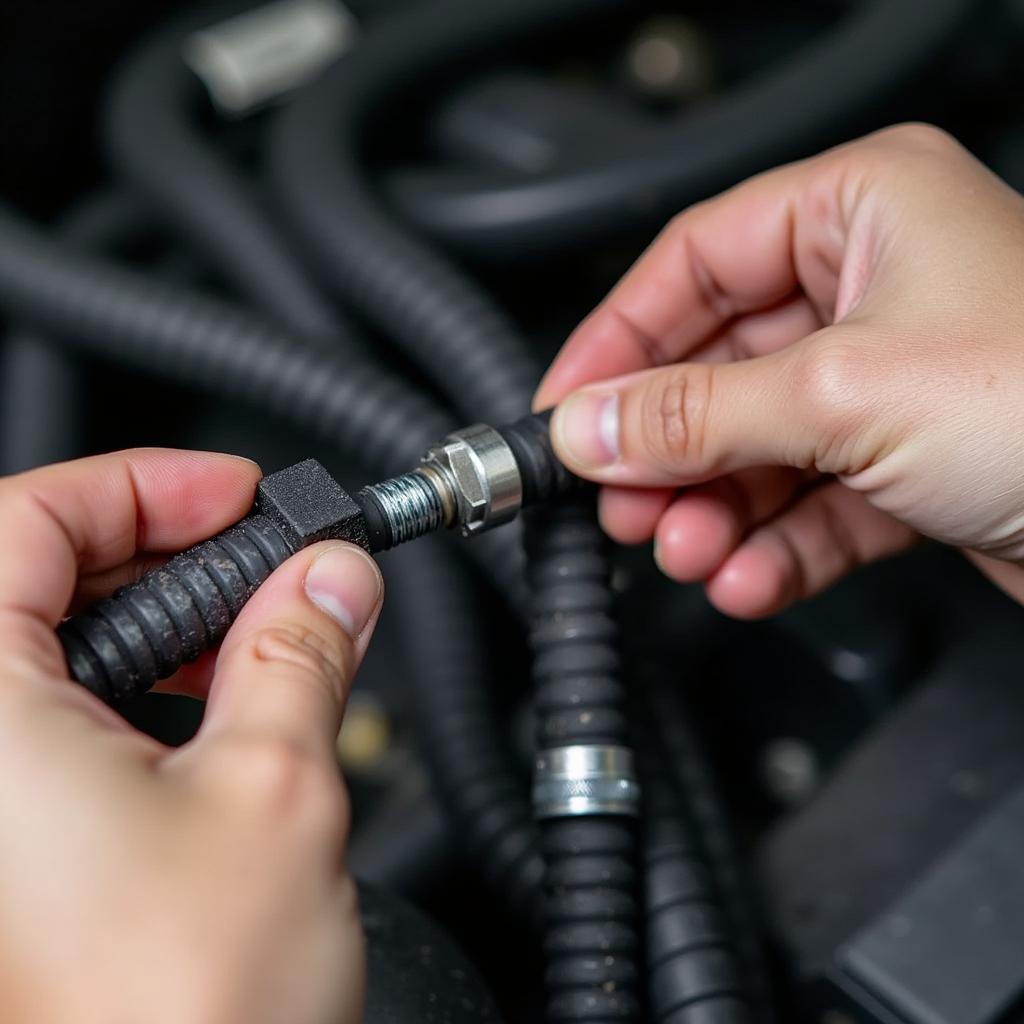Maintaining your car’s oil line is crucial for its overall health and performance. A properly functioning oil line ensures that all engine components receive the necessary lubrication, preventing friction, overheating, and premature wear. This guide delves into the intricacies of servicing your car’s oil line, covering everything from understanding its importance to diagnosing potential issues and performing necessary maintenance. You’ll gain valuable insights into keeping your engine running smoothly and extending its lifespan. If you’re looking for reliable car service information, especially concerning your car’s oil lines, you’ve come to the right place.
You might find the services at an authorized car service center particularly helpful for this task.
Why is Service Oil Line in Car Important?
The oil line in your car is the lifeline of your engine. It’s a network of passages and hoses that carry oil from the oil pan to vital engine components, including the crankshaft, camshaft, pistons, and connecting rods. This constant flow of oil is essential for several reasons:
- Lubrication: Oil reduces friction between moving parts, preventing wear and tear.
- Cooling: Oil absorbs heat generated by the engine, preventing overheating.
- Cleaning: Oil carries away debris and contaminants, keeping the engine clean.
- Sealing: Oil helps seal the gaps between piston rings and cylinder walls, improving compression and engine efficiency.
Ignoring your car’s oil line can lead to severe engine damage, requiring costly repairs or even engine replacement. Regular maintenance is crucial to prevent these issues.
Signs of a Problematic Oil Line
Several signs can indicate a problem with your car’s oil line. Recognizing these symptoms early on can prevent significant damage.
- Low oil pressure warning light: This is the most obvious sign and requires immediate attention.
- Engine overheating: If the oil isn’t circulating properly, the engine can overheat.
- Unusual engine noises: Knocking or ticking sounds can indicate a lack of lubrication.
- Oil leaks: Check for oil stains under your car.
- Dark or dirty oil: If your oil is excessively dark or gritty, it’s time for an oil change.
How to Service Oil Line in Car
Servicing your car’s oil line involves several key steps:
- Regular Oil Changes: Change your oil and oil filter according to your car’s manufacturer recommendations. This is the most basic and crucial step in maintaining a healthy oil line.
- Oil Line Inspection: Regularly inspect the oil lines for leaks, cracks, or damage. Look for kinks or blockages in the hoses.
- Oil Filter Replacement: Replace the oil filter with every oil change. A clogged filter can restrict oil flow.
- Flushing the Oil System: Periodically flushing the oil system can remove sludge and deposits that can accumulate over time.
- Oil Line Repair or Replacement: If you detect any leaks or damage, have the oil lines repaired or replaced by a qualified mechanic.
You can easily find comprehensive guides and resources on maintaining your Tata Nano LX, such as the Tata Nano LX car service manual, which often includes detailed information about the oil line and its maintenance.
 Inspecting and Maintaining a Car's Oil Line
Inspecting and Maintaining a Car's Oil Line
What is the cost to service the oil line in a car?
The cost to service an oil line can vary significantly depending on the extent of the work required. A simple oil change and filter replacement might cost between $50 and $100. However, if the oil lines need to be repaired or replaced, the cost can range from $200 to $500 or more, depending on the make and model of your vehicle and the labor rates in your area.
“Regular oil changes are an investment, not an expense. They can save you thousands of dollars in costly engine repairs down the road,” says Robert Johnson, a certified automotive technician with over 20 years of experience.
How often should I service my car’s oil line?
“The recommended oil change interval varies depending on the vehicle and the type of oil used. Consult your owner’s manual for specific recommendations,” advises Emily Carter, a senior automotive engineer specializing in engine lubrication systems.
Conclusion
Servicing your car’s oil line is essential for maintaining engine health and performance. Regularly checking for leaks, changing your oil and filter, and addressing any issues promptly can significantly extend the life of your engine and prevent costly repairs. Don’t neglect this crucial aspect of car maintenance. By following the tips in this guide, you can ensure that your car’s oil line remains in top condition, keeping your engine running smoothly for years to come. For routine car maintenance and servicing needs in Chennai, consider exploring options for 24 7 car service chennai. If you are looking for Maruti service centers, you can refer to maruti car service centre mehrauli. For Tata Motors service, you might find tata motors service malik cars helpful.
FAQ
- What is the function of the oil line in a car?
- What are the common signs of a faulty oil line?
- How often should I change my car’s oil?
- What is the cost of servicing the oil line?
- Can I service my car’s oil line myself?
- What type of oil should I use for my car?
- How can I check my car’s oil level?
Need help with car diagnostics? Reach out to us via WhatsApp: +1(641)206-8880, or Email: [email protected]. Our 24/7 customer support team is ready to assist you.

